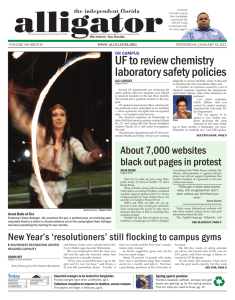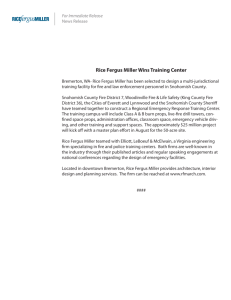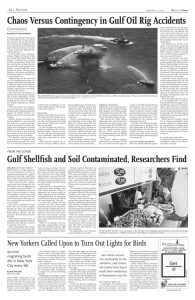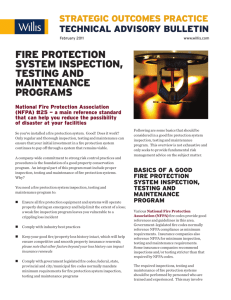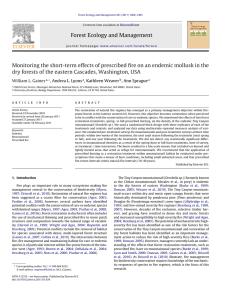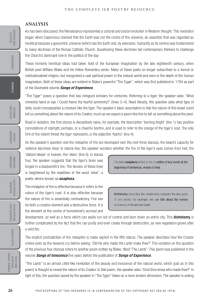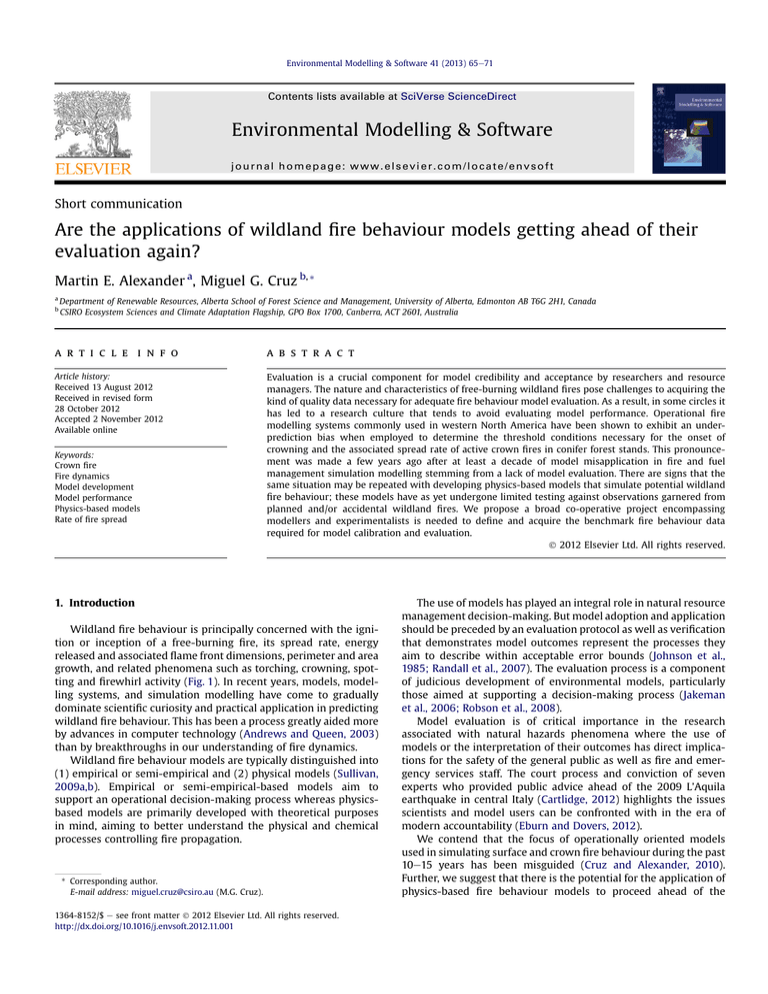
Environmental Modelling & Software 41 (2013) 65e71
Contents lists available at SciVerse ScienceDirect
Environmental Modelling & Software
journal homepage: www.elsevier.com/locate/envsoft
Short communication
Are the applications of wildland fire behaviour models getting ahead of their
evaluation again?
Martin E. Alexander a, Miguel G. Cruz b, *
a
b
Department of Renewable Resources, Alberta School of Forest Science and Management, University of Alberta, Edmonton AB T6G 2H1, Canada
CSIRO Ecosystem Sciences and Climate Adaptation Flagship, GPO Box 1700, Canberra, ACT 2601, Australia
a r t i c l e i n f o
a b s t r a c t
Article history:
Received 13 August 2012
Received in revised form
28 October 2012
Accepted 2 November 2012
Available online
Evaluation is a crucial component for model credibility and acceptance by researchers and resource
managers. The nature and characteristics of free-burning wildland fires pose challenges to acquiring the
kind of quality data necessary for adequate fire behaviour model evaluation. As a result, in some circles it
has led to a research culture that tends to avoid evaluating model performance. Operational fire
modelling systems commonly used in western North America have been shown to exhibit an underprediction bias when employed to determine the threshold conditions necessary for the onset of
crowning and the associated spread rate of active crown fires in conifer forest stands. This pronouncement was made a few years ago after at least a decade of model misapplication in fire and fuel
management simulation modelling stemming from a lack of model evaluation. There are signs that the
same situation may be repeated with developing physics-based models that simulate potential wildland
fire behaviour; these models have as yet undergone limited testing against observations garnered from
planned and/or accidental wildland fires. We propose a broad co-operative project encompassing
modellers and experimentalists is needed to define and acquire the benchmark fire behaviour data
required for model calibration and evaluation.
Ó 2012 Elsevier Ltd. All rights reserved.
Keywords:
Crown fire
Fire dynamics
Model development
Model performance
Physics-based models
Rate of fire spread
1. Introduction
Wildland fire behaviour is principally concerned with the ignition or inception of a free-burning fire, its spread rate, energy
released and associated flame front dimensions, perimeter and area
growth, and related phenomena such as torching, crowning, spotting and firewhirl activity (Fig. 1). In recent years, models, modelling systems, and simulation modelling have come to gradually
dominate scientific curiosity and practical application in predicting
wildland fire behaviour. This has been a process greatly aided more
by advances in computer technology (Andrews and Queen, 2003)
than by breakthroughs in our understanding of fire dynamics.
Wildland fire behaviour models are typically distinguished into
(1) empirical or semi-empirical and (2) physical models (Sullivan,
2009a,b). Empirical or semi-empirical-based models aim to
support an operational decision-making process whereas physicsbased models are primarily developed with theoretical purposes
in mind, aiming to better understand the physical and chemical
processes controlling fire propagation.
* Corresponding author.
E-mail address: miguel.cruz@csiro.au (M.G. Cruz).
1364-8152/$ e see front matter Ó 2012 Elsevier Ltd. All rights reserved.
http://dx.doi.org/10.1016/j.envsoft.2012.11.001
The use of models has played an integral role in natural resource
management decision-making. But model adoption and application
should be preceded by an evaluation protocol as well as verification
that demonstrates model outcomes represent the processes they
aim to describe within acceptable error bounds (Johnson et al.,
1985; Randall et al., 2007). The evaluation process is a component
of judicious development of environmental models, particularly
those aimed at supporting a decision-making process (Jakeman
et al., 2006; Robson et al., 2008).
Model evaluation is of critical importance in the research
associated with natural hazards phenomena where the use of
models or the interpretation of their outcomes has direct implications for the safety of the general public as well as fire and emergency services staff. The court process and conviction of seven
experts who provided public advice ahead of the 2009 L’Aquila
earthquake in central Italy (Cartlidge, 2012) highlights the issues
scientists and model users can be confronted with in the era of
modern accountability (Eburn and Dovers, 2012).
We contend that the focus of operationally oriented models
used in simulating surface and crown fire behaviour during the past
10e15 years has been misguided (Cruz and Alexander, 2010).
Further, we suggest that there is the potential for the application of
physics-based fire behaviour models to proceed ahead of the
66
M.E. Alexander, M.G. Cruz / Environmental Modelling & Software 41 (2013) 65e71
Fig. 1. Sequence of photos taken during the afternoon of August 22, 2005 near Coimbra, Portugal, showing some of the complexities involved in free-burning wildland fire
behaviour: (a) an advancing wildfire in a maritime pine (Pinus pinaster A.) forest spotting into an opening (local time: 16:39:57), followed by (b and c) spot fires coalescence
(respectively 16:41:14 and 16:41:28), and (d) merging with the main flame front (16:41:38), resulting in a greatly increased flame height. The elapsed time between photos (a) and
(d) was 105 s (photos by M.G. Cruz).
needed model evaluation. In this paper we outline the basis for our
déjà vu e like revelation. We also recommend ways to improve the
situation. However, it is not our purpose here to provide a detailed
evaluation protocol per Jakeman et al. (2006) and Blocken and
Gualtieri (2012) for wildland fire behaviour models.
2. Operational fire behaviour models
Beginning in the late 1990s, several fire modelling systems
incorporated the coupling of Rothermel’s (1972) surface fire
model with his crown fire rate of spread model (Rothermel, 1991)
and criteria for crown fire initiation and propagation in conifer
forests as described by Van Wagner (1977, 1993). These systems
were in turn used extensively for assessing the effectiveness of
fuel treatments on crown fire potential for more than a decade.
However, as Cruz and Alexander (2010) pointed out, the operational fire modelling systems currently used to simulate the
onset of crowning and active crown fire rate of spread in conifer
forests of the western US exhibit a significant underprediction
bias.
The principal sources of this underprediction bias were shown
to include (Cruz and Alexander, 2010): (1) incompatible model
linkages, (2) use of surface and crown fire rate of spread models
that have inherent underprediction biases themselves (Fig. 2), and
(3) a reduction in crown fire rate of spread based on the use of
unsubstantiated crown fraction burned functions. The use of
uncalibrated custom fuel models to represent surface fuelbeds was
considered as a fourth potential source of bias.
The results of simulation studies using operational fire modelling systems like NEXUS (Scott and Reinhardt, 2001) for example
gave the illusion that most conifer forests were “crown fire-proof”
given the exceptionally strong winds (e.g. >100 km h1) that were
considered needed to induce crowning (Scott, 2006). Schoennagel
et al. (2009) identified that 44,613 fuel manipulation treatments
had been implemented over an area totalling around three million
hectares in 11 western US states between 2004 and 2008. Some
565,000 ha were thinning treatments, of which 15% were within
the “community protection zone”. To what degree fire modelling
systems like NEXUS have been applied to derive the operational
prescriptions for thinning treatments aimed at mitigating crown
fire potential is unknown. However, the potential for misguided
management with detrimental consequences is a real possibility, as
would be with other applications of these systems in fire and fuel
management (e.g. Platt et al., 2011).
In spite of an increased awareness and recognition of shortcomings in these operational fire modelling systems, they continue
to be applied much in the same manner as in the past (e.g. Johnson
et al., 2011; Van de Water and North, 2011; Honig and Fulé, 2012).
There does however appear to be a shift in emphasis from fuel
management issues as in the past to broader ecological and environmental matters such as gauging the effects of forest insect
infestations, forest restoration and climate change scenarios on
M.E. Alexander, M.G. Cruz / Environmental Modelling & Software 41 (2013) 65e71
67
(WFDS) (Mell et al., 2007) constitute two models recently used to
quantify wildland fire dynamics.
3.1. FIRETEC development and evaluation
Fig. 2. Observed rates of spread of experimental active crown fires (n ¼ 34) and
wildfires that exhibited extensive active crowning (n ¼ 54) versus predictions based on
the Rothermel (1991) crown fire rate of spread model (adapted from Cruz and
Alexander, 2010). The dashed lines around the line of perfect agreement indicate the
35% error interval. MAE is the mean absolute error, MA%E is the mean absolute
percent error, and MBE is the mean bias error (Willmott, 1982).
crown fire potential (e.g. Ager et al., 2010; Simard et al., 2011; Honig
and Fulé, 2012; Schoennagel et al., 2012; Stephens et al., 2012).
Had an evaluation of the model coupling that underpins these
operational fire modelling systems taken place at the outset,
adjustments could have been made and more than a decade of
misapplication and erroneous results reported in the literature
would have been avoided. Some fire modelling system developers
have resisted evaluating their product, despite concerns about
severe underpredictions raised by some researchers (e.g. Fulé et al.,
2001; Agee and Lolley, 2006). Scott and Reinhardt (2001) stated
that there was a “lack of high-quality validation data” available to
do so, and acknowledged that the “gathering high quality data from
prescribed and wildfires for building and testing models of fire
behavior should be made a high priority”.
Research users like Stephens et al. (2009) considered that fire
behaviour “models have not all been field validated because of the
difficulty of doing so” but offered no further explanation. Honig and
Fulé (2012) stated that crown fire behaviour models “cannot be
reasonably validated by real-world data owing to the difficulty of
controlling crown fire activity”. While the possibility of an “escape”
is always possible with an intentional use of fire, conducting highintensity experimental fires has been shown to be feasible (Van
Wagner, 1977; Stocks et al., 2004), even in problematic fuel types
where propagation is accompanied by extensive spotting (McCaw
et al., 2012).
3. Physics-based fire behaviour models
Physics-based or processes oriented fire behaviour models are
formulated on the basis of the chemistry and physics of combustion
and heat transfer mechanisms involved in a wildland fire (Sullivan,
2009a; Morvan, 2011). The complexity and computational
requirements of some of physics-based fire behaviour models limit
their testing to idealized, laboratory scale experimental fires
(Morvan and Dupuy, 2001; Zhou et al., 2005). FIRETEC (Linn et al.,
2002) and the Wildlandeurban interface Fire Dynamics Simulator
FIRETEC has been under development by the Earth and Environmental Sciences Division at the Los Alamos National Laboratory
since 1994 for the specific purpose of modelling fire behaviour in
wildland fuels. This model has continuously evolved to accommodate computational refinements such as improved treatment of
sub-grid combustion and pyrolysis processes (Colman and Linn,
2007; Clark et al., 2010). Since 2005, the Institut National de la
Recherche Agronomique in Avignon, France, has participated in the
continuing development of FIRETEC (J.-L. Dupuy, personal
communication, 2012).
FIRETEC simulations of fire behaviour in a variety of wildland
fuel complexes have been undertaken over the years with the focus
being on the analysis of simulated fire dynamics (Linn and
Cunningham, 2005; Linn et al., 2012b) including model response
to changes in topography (Pimont et al., 2012), fuel complex
arrangement (Linn et al., 2010), and interacting flame fronts (Dupuy
et al., 2011). This work was undertaken to qualitatively validate the
capacity of FIRETEC to describe fire behaviour, rather than the
accuracy of model predictions per se. Evaluations of FIRETEC
simulations have until recently been limited to comparisons
against outputs of empirically based rate of fire spread models like
that of Cheney et al. (1998) for grasslands and those of Vega et al.
(1998) and Fernandes (2001) for shrublands. FIRETEC replicated
well the trends exhibited by the grassland model (Linn and
Cunningham, 2005). The comparison against the shrubland
models resulted in marked discrepancies possibly due to the
assumptions made regarding fuel complex structure (Marino et al.,
2012).
Dupuy et al. (2011) have however indicated that “reasonable
agreement” was found between model predictions and spread rates
observed in four small-scale free-burning experimental fires
carried out in shrublands in southern France and Spain. They also
thought the model provided acceptable predictions of the behaviour of interacting flame fronts in this fuel complex. Linn et al.
(2012a) compared FIRETEC rate of fire spread predictions with
observed values for two of the 10 experimental crown fires carried
out in a jack pine (Pinus banksiana) e black spruce (Picea mariana)
forest as part of the International Crown Fire Modelling Experiment
(ICFME) project in Canada’s Northwest Territories (Stocks et al.,
2004). The FIRETEC rate of spread predictions were in close
agreement with the observed rates given the error expectations
found for operational fire behaviour models (Alexander and Cruz,
2006). Although these preliminary comparisons are encouraging,
the sample size is small.
3.2. WFDS development and evaluation
WFDS represents an extension of the Fire Dynamics Simulator
(FDS), a well-established modelling system developed for simulating structural fires (McGrattan et al., 2007) as developed by the
Fire Research Division of the National Institute of Standards and
Technology (http://fire.nist.gov/fds/). Work began on the development of WFDS in 2003. The WFDS software is freely available for
downloading (http://www.fs.fed.us/pnw/fera/research/wfds/index.
shtml). WFDS was initially intended for modelling wildfire spread
through wildlandeurban interface areas (Mell et al., 2010) but it
would now appear to be viewed as applicable to wildland fuels in
general and other fire situations (e.g. Morvan et al., 2011).
FDS has undergone a continuous, well-documented model
verification and validation process of fire dynamics in structural
68
M.E. Alexander, M.G. Cruz / Environmental Modelling & Software 41 (2013) 65e71
and industrial settings (McDermott et al., 2010; McGrattan et al.,
2010). This process has ultimately increased model credibility and
allowed its developers to identify model shortcomings that have
led to model reformulation and its ongoing improvement.
To date, evaluations of WFDS have been limited to (i) comparisons
against an existing empirical-based fire behaviour model and data
associated with two outdoor experimental grassland fires and
(ii) laboratory experiments of individual burning Douglas-fir trees
involving a stationary heat source and trees of different heights
and moistures. Mell et al. (2007) found that WFDS simulations of head
fire rate of spread “compared favourably” to the rate of fire spread
model developed by Cheney et al. (1993) for continuous, cured
grassland fuels (the very simplest of wildland fuelbeds made up of
homogeneous, thermally thin fuels without marked gradients in fuel
moisture) as well as the fire perimeter growth dynamics of two
experimental fires (Fig. 3). The Cheney et al. (1993) empirical-based
model was found to underpredict the spread rate potential of
wind-driven wildfires in grassland fuels. Cheney et al. (1998) subsequently revised the model to more accurately reflect free-burning
fire propagation in grassland fuels. This suggests that the WFDS
numerical and thermophysical parameterization used by Mell
et al. (2007) is likely to underpredict the spread rate of Australian
grassland fires.
Mell et al. (2009) also reported favourable comparisons between
predictions and measurements made involving the burning of
individual 2- and 5-m tall Douglas-fir (Pseudotsuga menziesii) trees
in a laboratory setting (Fig. 4a). While these outcomes are
encouraging from a general fire behaviour standpoint, the situation
is considerably different from what would be experienced within
a forest involving a free-burning surface fire with a distinct horizontal flame zone depth (Fig. 4b) as opposed to a stationary “ring of
fire” (Fig. 4a). Nevertheless, some authors have regarded this
laboratory experiment as proof that WFDS is suitable for predicting
crown fire initiation (e.g. Contreras et al., 2012).
3.3. FIRETEC and WFDS applications
Initially portrayed as research models (Linn et al., 2012a),
physics-based fire behaviour models such as FIRETEC and WFDS are
increasingly being utilized to address a number of specific fire and
fuel management applications, without evaluation for the fuel
complexes that the simulations are being carried out in, namely
conifer forests or shrublands. This is a situation analogous to what
began to occur some 15 years ago with the operational systems
mentioned previously. Furthermore, simpler models are being
derived from trends exhibited by the physics-based models to
support a field application (Contreras et al., 2012).
Cassagne et al. (2011) for example used FIRETEC to evaluate the
effectiveness of prescribed burning to reduce fire hazard and the
temporal extent of this effect, yet to date FIRETEC has not been
shown to be able to reliably predict rate of spread, let alone fireline
intensity or flame height in shrubland fuel complexes. Nonetheless,
on the basis of the simulated results, Cassagne et al. (2011) have
suggested prescribed burning return intervals that will ensure safe
fire-fighting operations. Similarly, Pimont et al. (2011) have made
inferences relative to the effect of distinct silvicultural treatments
on fire behaviour in pine forests.
Like FIRETEC, WFDS has recently been applied to specific fire
and fuel management applications. Hoffman et al. (2012) for
example used WFDS to quantify the effects of tree mortality on
potential crown fire hazard associated with mountain pine beetle
(Dendroctonus ponderosae) attacks in lodgepole pine forests
(Pinus contorta). They justified their use of WFDS over other
models based on its ability to account for the spatial variability
in fuels and fuel-fireeatmospheric interactions that current
operational fire behaviour modelling systems are incapable of
addressing. However, WFDS has not been subjected to an evaluation related to these factors, nor did Hoffman et al. (2012) offer
empirical evidence or other information to substantiate the idea
that their simulations of fire behaviour in lodgepole pine stands
attacked by mountain pine beetle were representative of realworld situations.
A fair question is just how realistic are the simulations from
WFDS in lodgepole pine stands attacked by the mountain pine
beetle attacked or even unaffected stands? The application of WFDS
to conifer forests (Parsons et al., 2011; Contreras et al., 2012),
shouldn’t imply that it is necessarily capable of producing realistic
predictions of fire behaviour in these fuel complex structures.
There is a current trend towards management-oriented
outcomes being derived from the results of physics-based fire
behaviour models. This arises, in part, from the pressure stakeholders and funding agencies often put on researchers to produce
immediate, tangible results (J.-L. Dupuy, personal communication,
2012), leading to models producing management outputs in
scenarios they have not been evaluated against. The obvious
question then is: what are the associated safety and environmental
hazards if the parameterization in these modelling exercises proves
to be wrong?
Fig. 3. Comparison of observed versus simulated fire behaviour (from Mell et al., 2007): (a) oblique aerial photograph of an experimental grass fire in the Northern Territory of
Australia (200 by 200 m plot size) and (b) a WFDS visual simulation of the experimental grass fire at the same elapsed time since ignition. For a comparable view of an experimental
crown fire from the International Crown Fire Modelling Experiment (Stocks et al., 2004) and the corresponding FIRETEC visual simulation, see Pimont et al. (2009).
M.E. Alexander, M.G. Cruz / Environmental Modelling & Software 41 (2013) 65e71
69
Fig. 4. Photos of two contrasting fire behaviour situations involving conifer trees: (a) burning a 2-m tall Douglas-fir tree in the Large Fire Laboratory at the National Institute of
Standards and Technology campus in Gaithersburg, MD (photo from Mell et al., 2009) and (b) surface heading fire associated with prescribed underburning in a maritime pine
(Pinus pinaster) plantation in central Portugal (photo by P.M. Fernandes, Universidade de Trás-os-Montes e Alto Douro, Vila Real, Portugal).
4. Implications for wildland fire research
Extensive model evaluation needs to be viewed as an integral
and crucial part of the model development process as demonstrated, for example by Cruz et al. (in press), especially when the
ultimate aim of the model is to support a decision-making process
(Jakeman et al., 2006; Alexandrov et al., 2011). The evaluation of
models such as FIRETEC and WFDS is a complex process given the
range of phenomena and multiple scales represented. Some of the
elements of these models, such as pyrolysis, combustion and heat
transfer processes, and the fire-induced flow fields, are extremely
difficult to measure in a field setting. Nonetheless, the attempt to
transpose model outputs from the simulation realm into specific
fire and fuel management applications needs to be preceded by an
evaluation of the accuracy of the models in describing such basic
fire behaviour characteristics as the spread rate, intensity and flame
height of free-burning fires.
Consider the case of the crown fire rate of spread model of Albini
(1996). The initial model developed showed good performance
when compared against a dataset of nine experimental crown fires
in an immature jack pine forest, one of which was used for calibration purposes (Albini and Stocks, 1986). However, the lack of
additional data for evaluation purposes and the high computational
requirements ultimately precluded further application. Evaluation
of the model against data collected as part of the ICFME project
(Stocks et al., 2004) showed inconsistencies in model behaviour
and performance (Butler et al., 2004). The need to better understand crown fire dynamics and further test the performance of the
Albini (1996) model was the principal justification for the ICFME
undertaking. Had this evaluation not been carried out, the model
might have been implemented in various decision support systems,
leading to misguided and potentially hazardous management
policies and directives.
Physics-based fire behaviour models hold great promise in
advancing our theoretical understanding of wildland fire dynamics,
including direct linkages to biophysical processes. But are the
results they produce realistic? Are the rate of spread outputs
accurate across the several orders of magnitude this quantity spans
in a wildfire? Given that there is so little testing against empirical
field observations, there is a great deal of uncertainty associated
with their validity and in turn a potential lack of creditability in
these models. For example, neither FIRETEC nor WFDS has been
evaluated for their ability to predict crown fire initiation such as
undertaken for the Cruz et al. (2006) crown fuel ignition model
based on experimental surface and crown fires. One of the potential
limitations of existing fire behaviour datasets that could be used to
evaluate physics-based models is that there could be input variables that were not documented, thereby necessitating the need to
make assumptions such as Mell et al. (2007) and Linn et al. (2012a)
have had to undertake.
An active program of experimental burning coupled with the
monitoring of prescribed fires and wildfires (Stocks et al., 2004;
Alexander and Taylor, 2010) is sorely needed to evaluate both
current operational and physics-based fire behaviour models
before any further applications are undertaken (Cruz et al., 2003). It
is recognized that the type of data necessary to evaluate physicsbased models is not traditionally measured (e.g. detailed 3-D
description of the fuel complex and wind field, as well as
measurement of convective and radiative heat fluxes). A concerted
effort on the part of both fire behaviour modellers and experimentalists will be required to produce the type of benchmark data
on fire propagation covering a broad range of fuel types needed for
model evaluation purposes. Such an undertaking will also need the
full support of land management agencies and fire operations
personnel. We can cite several examples of where this has happen
in the past with other wildland fire behaviour research projects
(Stocks et al., 2004; Cruz et al., in press; McCaw et al., 2012).
The general reluctance to undertake evaluations seen earlier
with operational counterparts should be avoided with physicsbased fire behaviour models. Research and operational users of
these models should insist on it and refrain from focusing on
specific fire and fuel management applications until such time as
an evaluation has been accomplished to a reasonable endpoint.
Research funding agencies should also recognize the pressing need
to support studies to quantitatively evaluate physics-based models.
Noteworthy, although our paper focus on fire behaviour modelling,
the need for system evaluation extends to other fire modelling
subjects such as fire danger rating (Sharples et al., 2009) and
wildfire risk assessment (Fiorucci et al., 2008).
For maximum efficiency and in the spirit of a “common good”,
a cooperative project at a global level (Weber, 1995) in all these
undertakings should be undertaken with a view to first publishing
a peer-reviewed research problem analysis in order to systematically guide the process (Stoltenberg et al., 1970). Such details are
beyond the scope of the present paper but model evaluation would
undoubtedly include examination of the wealth of existing,
70
M.E. Alexander, M.G. Cruz / Environmental Modelling & Software 41 (2013) 65e71
independent datasets (e.g. Cheney et al., 1993, 1998; Stocks et al.,
2004; Alexander and Cruz, 2006; Cruz et al., 2006, in press;
McCaw et al., 2012).
5. Summary
Operational fire modelling systems were previously shown to
possess a number of weaknesses that limited their use in assessing
the flammability of natural forests and the effectiveness of fuel
treatments in reducing crown fire potential. Had evaluations been
undertaken as part of system development prior to implementation,
more than a decade of misapplication could have been averted.
The potential for a similar situation to arise exists with respect
to the use of the present generation of physics-based models of
wildland fire behaviour. Considering the implications to public and
wildland firefighter safety, community wildfire protection, environmental quality, and ecological integrity, this is not considered
acceptable. Model evaluation based on field observations and
measurements of free-burning fires across a range of fuel types and
fireline intensities is needed.
Acknowledgements
This article is a contribution of Joint Fire Science Program Project
JFSP 09-S-03-1. The comments of J.-L. Dupuy, J.K. Hiers, S.
Matthews, W.G. Page, C.L. Rice, A.L. Sullivan, and D.D. Wade on
earlier drafts of this paper are gratefully acknowledged. The
comments of four anonymous reviewers and Editors Tony Jakeman
and Alexey Voinov are very much appreciated.
References
Agee, J.K., Lolley, M.R., 2006. Thinning and prescribed fire effects on fuels and
potential fire behavior in an Eastern Cascades forest, Washington, USA. Fire
Ecology 2, 3e19.
Ager, A.A., Finney, M.A., McMahan, A., Cathcart, J., 2010. Measuring the effect of fuel
treatments on forest carbon using landscape risk analysis. Natural Hazards and
Earth System Sciences 10, 2515e2526.
Albini, F.A., 1996. Iterative solution of the radiation transport equations governing
spread of fire in wildland fuel. Physics of Combustion, Explosion, and Shock
Waves 32 (5), 71e81.
Albini, F.A., Stocks, B.J., 1986. Predicted and observed rates of spread of crown fire in
immature jack pine. Combustion Science and Technology 48, 65e76.
Alexander, M.E., Cruz, M.G., 2006. Evaluating a model for predicting active crown
fire rate of spread using wildfire observations. Canadian Journal of Forest
Research 36, 3015e3028.
Alexander, M.E., Taylor, S.W., 2010. Wildland fire behavior case studies and the 1938
Honey Fire controversy. Fire Management Today 70 (1), 15e25.
Alexandrov, G.A., Ames, D., Bellocchi, G., Bruen, M., Crout, N., Erechtchoukova, M.,
Hildebrandt, A., Hoffman, F., Jackisch, C., Khaiter, P., Mannina, G., Matsunaga, T.,
Purucker, S.T., Rivington, M., Samaniego, L., 2011. Technical assessment and
evaluation of environmental models and software: letter to the editor. Environmental Modelling & Software 26, 328e336.
Andrews, P.L., Queen, L.P., 2003. Fire modeling and information system technology.
International Journal of Wildland Fire 10, 343e352.
Blocken, B., Gualtieri, C., 2012. Ten iterative steps for model development and
evaluation applied to computational fluid dynamics for environmental fluid
mechanics. Environmental Modelling & Software 33, 1e22.
Butler, B.W., Finney, M.A., Andrews, P.L., Albini, F.A., 2004. A radiation-driven model
of crown fire spread. Canadian Journal of Forest Research 34, 1588e1599.
Cartlidge, E., 2012. Prison terms for L’Aquila experts shock scientists. Science 338
(6106), 451e452.
Cassagne, N., Pimont, F., Dupuy, J.-L., Linn, R.R., Marell, A., Oliveri, C., Rigolot, E., 2011.
Using a fire propagation model to assess the efficiency of prescribed burning in
reducing the fire hazard. Ecological Modelling 222, 1502e1514.
Cheney, N.P., Gould, J.S., Catchpole, W.R., 1993. Influence of fuel, weather and fire
shape variables on fire-spread in grasslands. International Journal of Wildland
Fire 3, 31e44.
Cheney, N.P., Gould, J.S., Catchpole, W.R., 1998. Prediction of fire spread in grasslands. International Journal of Wildland Fire 8, 1e13.
Clark, M., Fletcher, T.H., Linn, R.R., 2010. A sub-grid, mixture-fraction based thermodynamic equilibrium model for gas phase combustion in FIRETEC: development and results. International Journal of Wildland Fire 19, 202e212.
Colman, J.J., Linn, R.R., 2007. Separating combustion from pyrolysis in HIGRAD/
FIRETEC. International Journal of Wildland Fire 16, 493e502.
Contreras, M.A., Parsons, R.A., Chung, W., 2012. Modeling tree-level fuel connectivity to evaluate the effectiveness of thinning treatments for reducing crown
fire potential. Forest Ecology and Management 264, 134e149.
Cruz, M.G., Alexander, M.E., 2010. Assessing crown fire potential in coniferous
forests of western North America: a critique of current approaches and recent
simulation studies. International Journal of Wildland Fire 19, 377e398.
Cruz, M.G., Alexander, M.E., Wakimoto, R.H., 2003. Definition of a fire behavior
model evaluation protocol: a case study application to crown fire behavior
models. In: Omi, P.N., Joyce, L.A. (Eds.), Fire, Fuel Treatments and Ecological
Restoration: Conference Proceedings. U.S. Department of Agriculture, Forest
Service, Rocky Mountain Research Station, Fort Collins, CO, pp. 49e67. Proceedings.RMRS-P-29.
Cruz, M.G., Butler, B.W., Alexander, M.E., 2006. Predicting the ignition of crown fuels
above a spreading surface fire. Part II: model behavior and evaluation. International Journal of Wildland Fire 15, 61e72.
Cruz, M.G., McCaw, W.L., Anderson, W.R., Gould, J.S. Fire behaviour modelling in
semi-arid mallee-heath shrublands of southern Australia. Environmental
Modelling & Software, in press, http://dx.doi.org/10.1016/j.envsoft.2012.07.003.
Dupuy, J.-L., Linn, R.R., Konovalov, V., Pimont, F., Vega, J.A., Jiménez, E., 2011.
Exploring 3D coupled fire/atmosphere interactions downwind of wind-driven
surface fires and their influence on backfiring using the HIGRAD-FIRETEC
model. International Journal of Wildland Fire 20, 734e750.
Eburn, M., Dovers, S., 2012. Australian wildfire litigation. International Journal of
Wildland Fire 21, 488e497.
Fernandes, P.M., 2001. Fire spread prediction in shrub fuels in Portugal. Forest
Ecology and Management 144, 67e74.
Fiorucci, P., Gaetani, F., Minciardi, R., 2008. Development and application of
a system for dynamic wildfire risk assessment in Italy. Environmental Modelling & Software 23, 690e702.
Fulé, P.Z., McHugh, C., Heinlein, T.A., Covington, W.W., 2001. Potential fire behavior
is reduced following forest restoration treatments. In: Vance, R.K.,
Edminster, C.B., Covington, W.W., Blake, T.A. (Eds.), Ponderosa Pine Ecosystems
Restoration and Conservation: Steps Toward Stewardship. US Department of
Agriculture, Forest Service, Rocky Mountain Research Station, Ogden, UT,
pp. 28e35. Proceedings RMRS-P-22.
Hoffman, C., Morgan, P., Mell, W., Parsons, R., Strand, E.K., Cook, S., 2012. Simulation
of crown fire hazard immediately after bark beetle-caused mortality in lodgepole pine forests. Forest Science 58, 178e188.
Honig, K.A., Fulé, P.Z., 2012. Simulating effects of climate change and ecological
restoration on fire behaviour in a south-western USA ponderosa pine forest.
International Journal of Wildland Fire 21, 731e742.
Jakeman, A.J., Letcher, R.A., Norton, J.P., 2006. Ten iterative steps in development
and evaluation of environmental models. Environmental Modelling & Software
21, 602e614.
Johnson, D.H., Conroy, M.J., Nichols, J.D., 1985. The need for accuracy in modelling:
an example. Ecological Modelling 30, 157e161.
Johnson, M.C., Kennedy, M.C., Peterson, D.L., 2011. Simulating fuel treatment effects
in dry forests of western United States: testing the principles of a fire-safe
forest. Canadian Journal of Forest Research 41, 1018e1030.
Linn, R.R., Cunningham, P., 2005. Numerical simulations of grassfires using coupled
atmosphereefire model: basic fire behavior and dependence of wind speed.
Journal of Geophysical Research 110, D131007.
Linn, R.R., Reisner, J., Colman, J., Winterkamp, J., 2002. Studying wildfire using
FIRETEC. International Journal of Wildland Fire 11, 1e14.
Linn, R.R., Winterkamp, J.L., Weise, D.R., Edminster, C., 2010. A numerical study of
slope and fuel structure effects on coupled wildfire behaviour. International
Journal of Wildland Fire 19, 179e201.
Linn, R., Anderson, K., Winterkamp, J., Brooks, A., Wotton, M., Dupuy, J.-L., Pimont, F.,
Edminster, C., 2012a. Incorporating field wind data into FIRETEC simulations of
the International Crown Fire Modeling Experiment (ICFME): preliminary
lessons learned. Canadian Journal of Forest Research 42, 879e898.
Linn, R.R., Canfield, J.M., Cunningham, P., Edminster, C., Dupuy, J.-L., Pimont, F.,
2012b. Using periodic line fires to gain a new perspective on multi-dimensional
aspects of forward fire spread. Agricultural and Forest Meteorology 157, 60e76.
Marino, E., Dupuy, J.-L., Pimont, F., Guijarro, M., Hernando, Linn, R., 2012. Fuel bulk
density and fuel moisture content effects on fire rate of spread: a comparison
between FIRETEC model predictions and experimental results in shrub fuels.
Journal of Fire Sciences 30, 277e299.
McCaw, W.L., Gould, J.S., Cheney, N.P., Ellis, P.F.M., Anderson, W.R., 2012. Changes in
behaviour of fire in dry eucalypt forest as fuel increases with age. Forest Ecology
and Management 271, 170e181.
McDermott, R., McGrattan, K., Hostikka, S., Floyd, J., 2010. Fire Dynamics Simulator
(Version 5) Technical Reference Guide. Volume 2: Verification. US Department
of Commerce, National Institute of Standards and Technology, Gaithersburg,
MD. NIST Special Publication 1018e5.
McGrattan, K., Hostikka, S., Floyd, J., Baum, H., Rehm, R., 2007. Fire Dynamics
Simulator (Version 5) Technical Reference Guide. US Department of Commerce,
National Institute of Standards and Technology, Gaithersburg, MD. NIST Special
Publication 1018-5.
McGrattan, K., Hostikka, S., Floyd, J., McDermott, R., 2010. Fire Dynamics Simulator
(Version 5) Technical Reference Guide. Volume 3: Validation. US Department of
Commerce, National Institute of Standards and Technology, Gaithersburg, MD.
NIST Special Publication 1018e5.
Mell, W., Jenkins, M.A., Gould, J., Cheney, P., 2007. A physics-based approach to
modelling grassland fires. International Journal of Wildland Fire 16, 1e22.
M.E. Alexander, M.G. Cruz / Environmental Modelling & Software 41 (2013) 65e71
Mell, W., Maranghides, A., McDermott, R., Manzello, S.L., 2009. Numerical simulation and experiments of burning Douglas fir trees. Combustion and Flame 156,
2023e2041.
Mell, W.E., Manzello, S.L., Maranghides, A., Butry, D., Rehm, R.G., 2010. The wildlandeurban interface fire problem e current approaches and research needs.
International Journal of Wildland Fire 19, 238e251.
Morvan, D., 2011. Physical phenomena and length scales governing the behaviour of
wildfires: a case for physical modelling. Fire Technology 47, 437e460.
Morvan, D., Dupuy, J., 2001. Modeling of fire spread through a forest fuel bed using
a multiphase formulation. Combustion and Flame 127, 1981e1994.
Morvan, D., Hoffman, C., Rego, F., Mell, W., 2011. Numerical simulation of the
interaction between two fire fronts in grassland and shrubland. Fire Safety
Journal 46, 469e479.
Parsons, R.A., Mell, W.E., McCauley, P., 2011. Linking 3D spatial models of fuels and
fire: effects of spatial heterogeneity on fire behavior. Ecological Modelling 222,
679e691.
Pimont, F., Dupuy, J.-L., Linn, R.R., Dupont, S., 2009. Validation of FIRETEC windflows over a canopy and a fuel-break. International Journal of Wildland Fire
18, 775e790.
Pimont, F., Dupuy, J.-L., Linn, R.R., Dupont, S., 2011. Impact of tree canopy structure
on wind flow and fire propagation simulated with FIRETEC. Annals of Forest
Science 68, 523e530.
Pimont, F., Dupuy, J.-L., Linn, R.R., 2012. Coupled slope and wind effects on fire
spread with influences of fire size: a numerical study using FIRETEC. International Journal of Wildland Fire 21, 828e842.
Platt, R.V., Schoennagel, T., Veblen, T.T., Sherriff, R.L., 2011. Modeling wildfire
potential in residential parcels: a case study of the north-central Colorado Front
Range. Landscape and Urban Planning 102, 117e126.
Randall, D.A., Wood, R.A., Bony, S., Colman, R., Fichefet, T., Fyfe, J., Kattsov, V.,
Pitman, A., Shukla, J., Srinivasan, J., Stouffer, R.J., Sumi, A., Taylor, K.E., 2007.
Climate models and their evaluation. In: Solomon, S., Qin, D., Manning, M.,
Chen, Z., Marquis, M., Averyt, K.B., Tignor, M., Miller, H.L. (Eds.), Climate Change
2007: The Physical Science Basis. Contribution of Working Group I to the Fourth
Assessment Report of the Intergovernmental Panel on Climate Change. Cambridge University Press, Cambridge, UK, pp. 589e662.
Robson, B.J., Hamilton, D.P., Webster, I.T., Chan, T., 2008. Ten steps applied to
development and evaluation of process-based biogeochemical models of
estuaries. Environmental Modelling & Software 23, 369e384.
Rothermel, R.C., 1972. A Mathematical Model for Predicting Fire Spread in Wildland
Fuels. US Department of Agriculture, Forest Service, Intermountain Forest and
Range Experiment Station, Ogden, UT. Research Paper INT-115.
Rothermel, R.C., 1991. Predicting Behavior and Size of Crown Fires in the Northern
Rocky Mountains. US Department of Agriculture, Forest Service, Intermountain
Research Station, Ogden, UT. Research Paper INT-438.
Schoennagel, T., Nelson, C.R., Theobald, D.M., Carnwath, G.C., Champman, T.B., 2009.
Implementation of National Fire Plan treatments near the wildlandeurban
interface in the western United States. Proceedings of National Academy of
Sciences United States of America 106, 10706e10711.
Schoennagel, T., Veblen, T.T., Negron, J.F., Smith, J.M., 2012. Effects of mountain pine
beetle on fuels and expected fire behavior in lodgepole pine forests, Colorado,
USA. PLoS ONE 7 (1), e30002.
71
Scott, J.H., 2006. Comparison of Crown Fire Modeling Systems Used in Three Fire
Management Applications. US Department of Agriculture, Forest Service, Rocky
Mountain Research Station, Fort Collins, CO. Research Paper RMRS-RP-58.
Scott, J.H., Reinhardt, E.D., 2001. Assessing Crown Fire Potential by Linking Models
of Surface and Crown Fire Behavior. US Department of Agriculture, Forest
Service, Rocky Mountain Research Station, Fort Collins, CO. Research Paper
RMRS-RP-29.
Sharples, J.J., McRae, R.H.D., Weber, R.O., Gill, A.M., 2009. A simple index for
assessing fire danger. Environmental Modelling & Software 24, 764e774.
Simard, M., Romme, W.H., Griffin, J.M., Turner, M.G., 2011. Do mountain pine beetle
outbreaks change the probability of active crown fire in lodgepole pine forests?
Ecological Monographs 81, 3e24.
Stephens, S.L., Moghaddas, J.J., Edminster, C., Fiedler, C.E., Haase, S., Harrington, M.,
Keeley, J.E., Knapp, E.E., 2009. Fire treatment effects on vegetation structure,
fuels, and potential fire severity in western US forests. Ecological Applications
19, 305e320.
Stephens, S.L., Boerner, R.E.J., Moghaddas, J.J., Moghaddas, E.E.Y., Collins, B.M.,
Dow, C.B., Edminster, C., Fiedler, C.E., Fry, D.L., Hartsough, B.R., Keeley, J.E.,
Knapp, E.E., McIver, J.D., Skinner, C.N., Youngblood, A., 2012. Fuel treatment
impacts on estimated wildfire carbon loss from forests in Montana, Oregon,
California, and Arizona. Ecosphere 3 (5), 38.
Stocks, B.J., Alexander, M.E., Wotton, B.M., Stefner, C.N., Flannigan, M.D., Taylor, S.W.,
Lavoie, N., Mason, J.A., Hartley, G.R., Maffey, M.E., Dalrymple, G.N., Blake, T.W.,
Cruz, M.G., Lanoville, R.A., 2004. Crown fire behaviour in a northern jack pinee
black spruce forest. Canadian Journal of Forest Research 34, 1548e1560.
Stoltenberg, C.H., Ware, K.D., Marty, R.J., Wray, R.D., Wellons, J.D., 1970. Planning
Research for Resource Decisions. Iowa State University Press, Ames, IA.
Sullivan, A., 2009a. Wildland fire spread modelling, 1990e2007. 1: physical and
quasi-physical models. International Journal of Wildland Fire 18, 349e368.
Sullivan, A., 2009b. Wildland fire spread modeling, 1990e2007. 2: empirical and
quasi-empirical models. International Journal of Wildland Fire 18, 369e386.
Van de Water, K., North, M., 2011. Stand structure, fuel loads, and fire behavior in
riparian and upland forests, Sierra Nevada Mountains, USA; a comparison of
current and reconstructed conditions. Forest Ecology and Management 262,
215e228.
Van Wagner, C.E., 1977. Conditions for the start and spread of crown fire. Canadian
Journal of Forest Research 7, 23e34.
Van Wagner, C.E., 1993. Prediction of crown fire behavior in two stands of jack pine.
Canadian Journal of Forest Research 23, 442e449.
Vega, J.A., Cuiñas, P., Fonturbel, T., Perez-Gorostiaga, P., Fernandes, C., 1998. Predicting fire behaviour in Galician (NW Spain) shrubland fuel complexes. In:
Viegas, D.X. (Ed.), Proceedings of III International Conference on Forest Fire
Research/14th Fire and Forest Meteorology, vol. II. University of Coimbra, Luso,
Portugal, Coimbra, Portugal, pp. 713e728. 1998 Nov. 16e20.
Weber, M.G., 1995. Fire research and the global village. Forestry Chronicle 71,
584e588.
Willmott, C.J., 1982. Some comments on the evaluation of model performance.
Bulletin of the American Meteorology Society 63, 1309e1313.
Zhou, X., Mahalingam, S., Weise, D., 2005. Modeling of marginal burning state
of fire spread in live chaparral shrub fuel bed. Combustion and Flame 143,
183e198.

